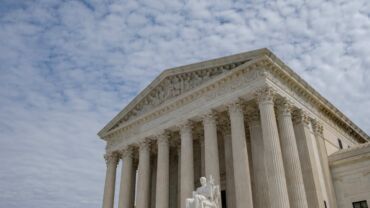Final Rule: Prudence and Loyalty in Selecting Plan Investments and Exercising Shareholder Rights, 29 CFR Part 2550, 87 Fed. Reg. ____ (Dec. 1, 2022); Fact Sheet: Final Rule on Prudence and Loyalty in Selecting Plan Investments and Exercising Shareholder Rights (Nov. 22, 2022)
The DOL has finalized regulations allowing plan fiduciaries to consider climate change and other environmental, social, and governance (“ESG”) factors when selecting retirement investments and exercising shareholder rights, such as proxy voting. Final regulations issued during the Trump administration required fiduciaries to evaluate investments solely based on financial considerations, with a strict prohibition against subordinating participants’ and beneficiaries’ financial interests to ESG or similarly oriented nonfinancial considerations. The Biden administration subsequently suspended enforcement of those regulations (see our Checkpoint article), and in 2021 released proposed regulations that would allow fiduciaries to balance climate change and other ESG factors in selecting plan investments (see our Checkpoint article). The DOL has now finalized those regulations with changes, effective 60 days after publication in the Federal Register. Here are highlights:
-
ESG Factors Explicitly Allowed. Like the proposed regulations, the final regulations state that a fiduciary may consider all factors reasonably relevant to an investment risk and return analysis, including ESG factors. However, proposed wording indicating that appropriate consideration of an investment portfolio “may often require” an evaluation of ESG factors has been deleted, making clear that ESG factors need not be treated differently than other factors.
-
Tiebreaker. A “tiebreaker test” that allowed fiduciaries to consider collateral benefits as tiebreakers in certain circumstances has been replaced with a standard that requires fiduciaries to prudently conclude that competing investments, including ESG investments, equally serve the plan’s financial interest. A fiduciary may not accept reduced returns or greater risks to secure collateral benefits. In a change from the proposal, the final regulations remove a documentation requirement under which fiduciaries using a collateral benefit as a tiebreaker would have had to prominently display the collateral benefit in disclosure materials provided to participants and beneficiaries.
-
QDIAs. Like the proposed regulations, the final regulations remove stricter rules for qualified default investment alternatives (QDIAs) so that the same standards apply to QDIAs as to investments generally.
-
Pecuniary Factor Terminology Dropped. As was proposed, the final regulations drop the prior final regulations’ “pecuniary/non-pecuniary” terminology based on concerns that it causes confusion and a chilling effect to financially beneficial choices such as ESG investments, even when it would be financially prudent to select them.
-
Voting Obligation. The final regulations delete the statement that fiduciaries do not have to vote every proxy or exercise every shareholder right, due to the DOL’s concern that the requirement could be misread as suggesting that fiduciaries should be indifferent to the exercise of their rights as shareholders, even if the cost is minimal. Like the proposal, the final regulations also eliminate the two safe harbor examples of permissible proxy voting policies.
-
Proxy Monitoring and Record Requirements. Like the proposal, the final regulations eliminate monitoring obligations when the authority to exercise shareholder rights has been delegated, as well as the requirement to maintain records on proxy voting and other shareholder rights.
-
Participant-Directed Investments. The final regulations clarify that fiduciaries do not violate their duty of loyalty solely by considering participants’ nonfinancial preferences when creating a menu of prudent investment options for participant-directed individual account plans.
EBIA Comment: The final regulations purport to clarify that fiduciaries may consider the potential financial benefits of ESG funds when selecting investments, and that doing so may not violate ERISA. However, it is unclear whether this will be the case in operation. Fiduciaries should note the Preamble’s statement that the final regulations do not change the long-standing principle that the duties of prudence and loyalty require ERISA plan fiduciaries to focus on relevant risk-return factors, and not subordinate the interests of participants and beneficiaries to objectives unrelated to the provision of plan benefits. Fiduciaries who lose sight of this overarching principle could be subject to costly litigation or penalties. For more information, see EBIA’s 401(k) Plans manual at Sections XXV.D.2.b (“ESG Investments”), XXV.L (“Proxy Voting and Shareholder Rights”), and XXVI.J (“Fiduciary Protection for Qualified Default Investment Alternative (QDIA)”).
Contributing Editors: EBIA Staff.









